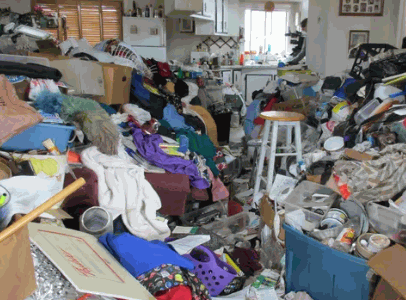Hoarding is a complex issue that affects millions of people worldwide. From the characteristics and causes of hoarding to identifying and helping someone with hoarding disorder, this article covers everything you need to know about this mental health condition.
We will discuss the treatment options available, including cognitive behavioral therapy and medications, as well as practical tips for preventing hoarding.
If you or someone you know is struggling with hoarding, read on to learn how to navigate this challenging situation with empathy and understanding.

What Is Hoarding?
Hoarding disorder is a complex psychological condition characterized by persistent difficulty in discarding or parting with possessions, leading to an excessive accumulation of items regardless of their actual value. This behavior often results in cluttered living spaces that can significantly impact a person’s day-to-day life and well-being.
Find out more: Best Way To Clean Laminate Floors
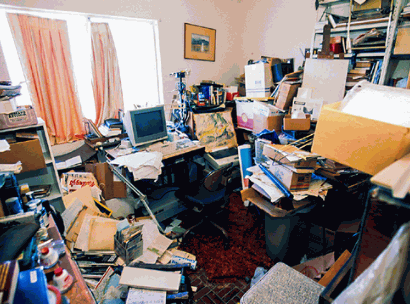
What Are The Characteristics Of Hoarding?
The characteristics of hoarding disorder include the excessive accumulation of possessions, difficulty discarding items, and the strong belief that these items are necessary or valuable.
Individuals with hoarding disorder often experience distress or anxiety at the thought of parting with their possessions, leading them to keep items that others might view as unnecessary or worthless. This can manifest in a variety of ways, such as acquiring free items or things that others have discarded. These individuals may also have a tendency to save items that hold sentimental value or trigger specific memories, even if the objects have limited practical use.
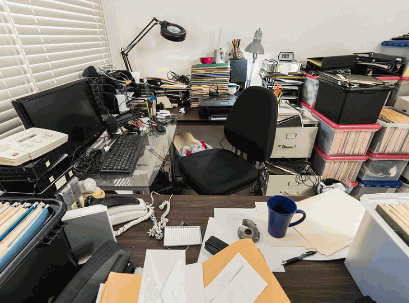
What Causes Hoarding?
Hoarding disorder can be caused by a variety of factors including genetics, brain function abnormalities, and emotional needs, often requiring the intervention of a mental health provider to diagnose and treat the condition.
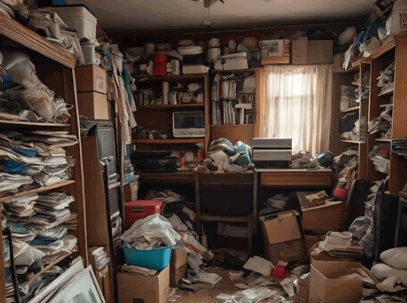
Is Hoarding A Mental Illness?
Yes, hoarding disorder is recognised as a mental illness that requires professional treatment and support from a qualified mental health provider.
Individuals with hoarding disorder exhibit persistent difficulty discarding or parting with possessions, regardless of their actual value, leading to an accumulation of clutter that significantly impacts daily living. This behaviour stems from strong emotional attachments to the items, fear of needing them in the future, or a belief that the belongings possess unique significance.
Diagnostic criteria for hoarding disorder include excessive acquisition of items, cluttered living spaces that are unsuitable for their intended use, distress or impairment caused by the hoarding behaviour, and reluctance to allow others to touch or move possessions.
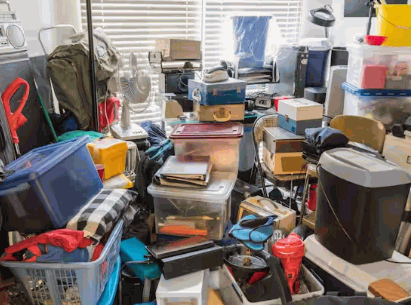
How To Identify A Hoarder?
Identifying a hoarder involves recognising signs such as excessive accumulation of belongings, cluttered living spaces, and difficulty discarding items.
Hoarding disorder typically manifests in various distinct behaviours and patterns. Individuals with this condition may have an overwhelming urge to acquire and keep items, often regardless of their actual value or usefulness. They may struggle with organisation, leading to chaotic and overcrowded living conditions.
Hoarding behaviour is characterised by an intense emotional attachment to possessions, causing distress when faced with the idea of letting go. This emotional bond with objects is a key differentiator from ordinary collecting. Hoarders often face challenges in making decisions and may exhibit perfectionistic tendencies that hinder the decluttering process.

How To Help Someone With Hoarding Disorder?
Helping someone with a hoarding disorder requires a compassionate approach that involves:
- Educating oneself about the condition
- Offering empathetic support
- Encouraging professional treatment
- Providing practical assistance to the person as well as their family members
Educate Yourself About Hoarding
Educating yourself about hoarding disorder involves understanding the underlying beliefs and behaviors that contribute to the excessive accumulation of clutter.
By gaining knowledge about hoarding disorder, individuals can develop empathy and compassion for those affected by this condition. Understanding the psychological factors behind hoarding can aid in recognizing the complexities involved and help in creating effective intervention strategies. Learning about the impact of hoarding on individuals’ lives can facilitate a more supportive and non-judgmental approach towards those struggling with this disorder.
Approach The Person With Empathy And Understanding
Approaching a person with hoarding disorder with empathy and understanding is crucial to addressing their emotional needs and fostering a supportive environment for change.
One effective approach is to listen actively to their concerns and acknowledge their feelings without judgment. Engage in open-ended conversations that allow them to express themselves freely.
- Offer your support in a non-intrusive manner, respecting their boundaries and autonomy.
- Validate their experiences and struggles, showing genuine compassion and understanding.
By demonstrating patience and acceptance, you can build trust and encourage them to consider seeking professional help or assistance in decluttering and organizing their living space.
Encourage Them To Seek Professional Help
Encouraging someone with a hoarding disorder to seek professional help, such as a therapist specialising in cognitive behavioral therapy, is a critical step toward effective treatment.
Professional treatment, particularly cognitive behavioral therapy (CBT), offers a structured approach to addressing the underlying causes of hoarding behavior. Through CBT, individuals can learn to challenge distorted thoughts and beliefs contributing to their hoarding tendencies. Therapists can also provide practical strategies to help individuals declutter their living spaces and develop healthier habits. The support and guidance that professionals offer can give the power to individuals to make lasting changes and improve their quality of life.
- It is important to motivate and support the individual in seeking help. Encouraging open communication, expressing empathy, and showing understanding can create a safe environment for the individual to discuss their struggles. Providing resources and information about the benefits of professional treatment can also help reduce any fears or uncertainties they may have.
Offer Practical Support
Offering practical support to a person with a hoarding disorder involves helping them sort through their belongings and providing organisational assistance, often with the involvement of family members.
One crucial aspect of assisting them with decluttering is to approach the task with empathy and understanding. Creating a safe and non-judgmental environment can help reduce their anxiety about letting go of possessions. Setting small and achievable goals can make the process less overwhelming. Involving family members in decision-making processes can help facilitate a sense of collaboration and support. By working together to establish manageable systems and routines, progress can be made towards a more organised living space.
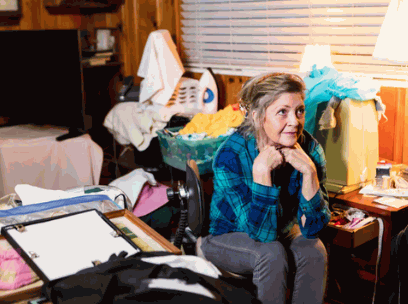
What Are The Treatment Options For Hoarding?
The treatment options for hoarding disorder include cognitive behavioural therapy, medication, and participation in support groups, all of which can be guided by a qualified therapist.
Cognitive Behavioural Therapy
Cognitive behavioural therapy (CBT) is a highly effective treatment for hoarding disorder, where a therapist works with the individual to change their hoarding behaviours and thought patterns.
One of the key principles of CBT is its focus on identifying and challenging negative thought patterns that contribute to hoarding behaviour. Through a collaborative approach, the therapist helps the individual recognise these unhelpful beliefs and develop healthier coping strategies. In addition, CBT emphasises the importance of gradual exposure to discarding possessions, helping the person confront their fears and anxieties surrounding letting go of items.
The therapist plays a crucial role in guiding the individual through the CBT process, providing support, encouragement, and expertise in addressing hoarding tendencies. By fostering a trusting and non-judgemental environment, the therapist helps the individual feel given the power to make positive changes in their behaviour. Together, they set realistic goals and monitor progress, working towards reducing clutter and improving the individual’s quality of life.

Medications
Medicines can be prescribed by a mental health provider as part of the treatment plan for hoarding disorder, especially when there are co-occurring conditions such as anxiety or depression.
In some cases, selective serotonin reuptake inhibitors (SSRIs) like paroxetine or sertraline may be recommended to help manage the symptoms of hoarding disorder by targeting underlying anxiety. These medicines can assist in reducing obsessive thoughts and compulsive behaviours linked to hoarding.
It is crucial to note that the effectiveness of medication can vary from person to person, and close monitoring by a mental health professional is essential to adjust dosages and monitor potential side effects. Collaborating with a therapist or psychiatrist allows for a holistic approach to treatment, incorporating both medication management and psychotherapy.

Support Groups
Support groups provide a valuable space for individuals with hoarding disorder and their family members to share experiences, gain insights, and receive emotional support.
Being part of a support group can offer a sense of belonging and understanding that one might not find elsewhere. Sharing common challenges and triumphs with others facing similar struggles can reduce feelings of isolation and stigma. In these groups, individuals can openly discuss their concerns, fears, and aspirations without judgment, fostering a sense of empathy and camaraderie.
These platforms serve as a fertile ground for exchanging practical tips and coping mechanisms. Participants can learn valuable strategies to declutter spaces, manage stress triggers, and cultivate healthier habits.
How To Prevent Hoarding?
Preventing hoarding involves implementing strategies such as regular decluttering, setting limits for items, and seeking help from a mental health provider when necessary to address underlying issues.
Remove Unnecessary Items On A Regular Basis
Regular decluttering is an effective way to prevent hoarding by keeping the accumulation of items under control and reducing clutter.
By consistently setting aside time to declutter your living space, you allow yourself to stay organised and maintain a sense of clarity in your surroundings. Implementing a regular decluttering schedule not only helps prevent hoarding tendencies but also promotes a healthier living environment.
- Start small by decluttering one area at a time, such as a drawer or a cupboard, and gradually work your way through the entire space.
- Sort items into categories like keep, donate, or dispose of to make decisions easier and more efficient.
- Create designated storage areas for different items to avoid unnecessary clutter and make it easier to find things when needed.
Set Limits For Items
Setting limits for items can help prevent the build-up of clutter and ensure that belongings are kept within manageable quantities.
This approach encourages individuals to evaluate the value of each item they bring into their space.
By adopting a one-in-one-out policy, where a new item replaces an old one, ensures that possessions do not accumulate unnecessarily.
Another effective strategy is to assess the necessity of an item before acquiring it, considering if it truly serves a purpose or adds value to one’s life.
Being mindful of these principles can lead to a more organised and intentional approach to managing belongings, resulting in a clutter-free and stress-free living environment.
Seek Help If Necessary
If hoarding tendencies become overwhelming, it is crucial to seek help from a mental health provider who can offer appropriate treatment and support.
Hoarding behaviours can significantly impact an individual’s quality of life, relationships, and overall well-being. Recognising the signs of hoarding disorder is the first step towards seeking help. These signs may include excessive clutter, difficulty parting with possessions, and feelings of distress when attempting to discard items.
When addressing hoarding behaviours, it is essential to find a mental health provider experienced in treating hoarding disorder. This professional can offer tailored therapies, such as cognitive-behavioural therapy or medication, to help manage the condition effectively. Seeking support early can lead to improved outcomes and a healthier living environment.
